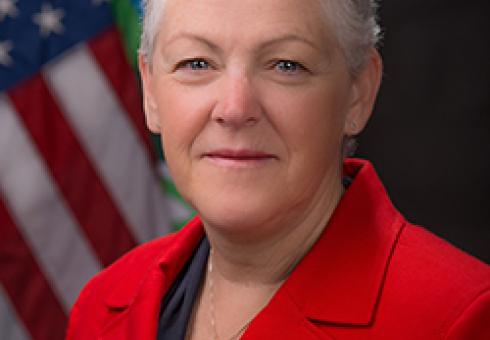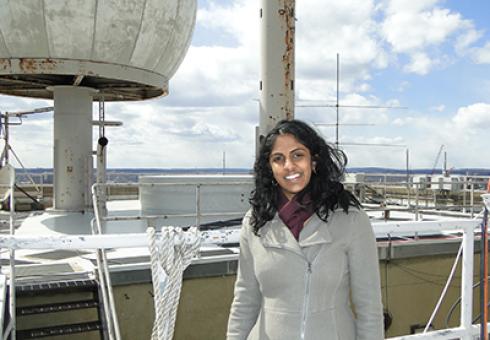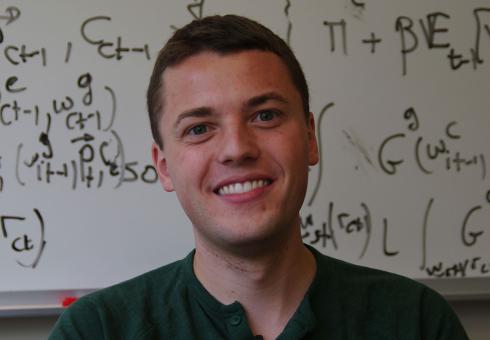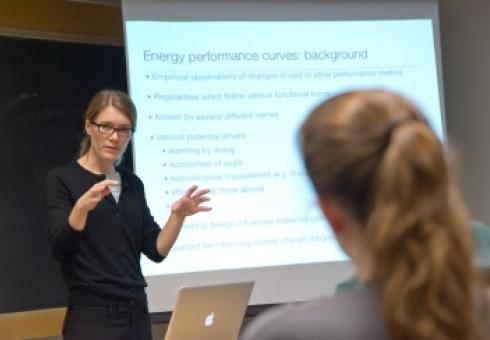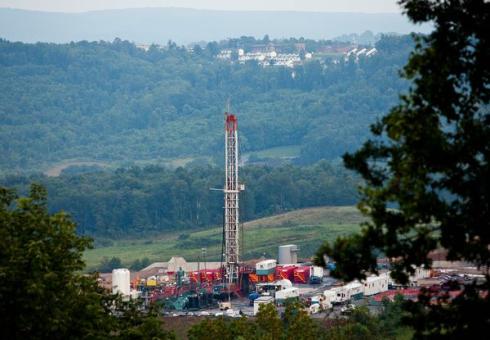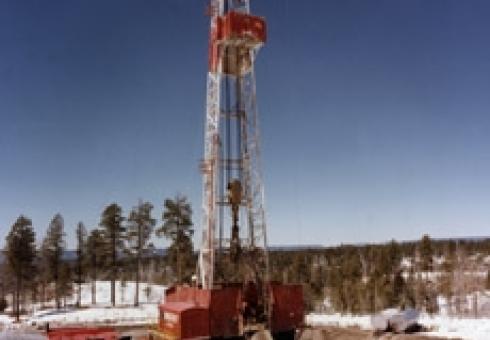A return home for the Massachusetts native who spent more than 25 years working on environmental issues in the state, McCarthy said she saw the meeting as an opportunity to "learn from the experts who have been so valuable in providing the research and the science" her office needs to be successful.
Robust science, and clear cost-benefits associated with that science, is critical, McCarthy said — a lesson roundtable participant and environmental economics Professor Michael Greenstone helped her realize when he was the chief economist for President Obama's Council of Economic Advisers during the first year of the administration.
"I think the agency has tremendously benefitted from that, specifically the air program because we are under constant scrutiny," McCarthy said. "Everything these people know intersects very directly with the work I've been doing for the president."
The visit came just days after President Obama's State of the Union address, where he laid out his intention to take an "all-of-the-above" approach toward America's energy future.
"In this administration we are looking for everything from commitments to renewables, that would be wind and solar, but also recognizing that coal will have a place in the mix," McCarthy said of the president's vision. "We're asking ourselves from the EPA side what that means for our upcoming rules on greenhouse gases and source performance standards for powerplants. How do you write it in a way that's consistent with the rules and still allows a place for new coal and new technologies?"
Leadership on mercury

Joint Program on Global Change
Co-Director John Reilly
Noelle Selin, who participated in the discussion, was also excited to hear the president mention mercury.
"I do think that the Mercury and Air Toxics Standards are something we've been waiting for, for a long time, and they are a really forward-looking rule," Selin said.
She noted that Massachusetts has lead the way in controlling mercury, perhaps due to McCarthy's earlier leadership, and that the state will especially gain from the national rule because it is upwind of polluting coal-mining states to its south.
- See "MIT researcher: U.S. taking leadership on mercury in the environment" to learn more about Selin's view of the mercury standards.
Mentioning the global negotiations on mercury — scheduled to wrap up in January 2013, after the next presidential election — Selin asked what role the new standards might play in the global arena as China's mercury emissions continue to grow and endanger the gains made by the new rule.
"We were hoping that if we put out the powerplant rule [mercury standards] that would bolster our role in the discussion," McCarthy said. "It was one of the issues we considered when we were going through the process of forming the rule. We had to do our part … we had to have a legitimate position in the international discussion."
Tapping the value of natural gas

McCarthy acknowledged that the mercury standards come while the cost of natural gas is low, which she said is "changing the energy world" and making some coal-fired powerplants "ineffective, inefficient and not competitive."
MIT Energy Initiative Director Ernest Moniz agreed: "I think we all agree that the mercury rules are absolutely critical in terms of displacing some coal, in addition to the economics of coal and gas with natural gas prices below $3 per million Btu."
But Christopher Knittel, an energy economics professor at the MIT Sloan School of Management, pointed out that natural gas deposits can be viewed as a huge opportunity — but also, a huge risk.
One of the challenges with natural gas is that the extraction process — a process called hydraulic fracturing — emits Volatile Organic Compounds (VOCs), such as methane, which cause smog and are associated with some health effects such as cancer. Methane is also a greenhouse gas that contributes to climate change.
Richard Schmalensee, director of the Center for Energy and Environmental Policy Research, addressed another challenge: the role that states play.
"The state's roles are problematic because you've got all this gas in places that have never had experience with anything like it," Schmalensee said.
McCarthy said there is a need for standard best practices within the industry — a topic the president addressed in his speech, as he challenged natural gas companies not to follow in the footsteps of the oil industry in terms of polluting now and worrying about it later.
"The good news about that is when you capture the VOCs you capture the methane. When you capture methane you sell it," McCarthy said. "So the cost-effectiveness of those strategies is quite good."
The EPA is close to finalizing a rule in April 2012 that would reduce VOCs from the oil and natural gas industry.
Meeting the Climate Challenge
The inclusion of climate change was another exciting point for McCarthy in the president's address.
But Susan Solomon, a professor of atmospheric chemistry who recently joined MIT from the National Oceanic and Atmospheric Administration (NOAA), said she thought the president missed an opportunity to expand on that point.
"This issue of climate change isn't one that's going to be solved by everyone pitching in. It's not like recycling where if we can all do our part we'll be better off," Solomon said. "It really does require new technologies and investments. So the most important thing that a citizen can do is to engage in a discussion about that and I think he missed an opportunity to call for engagement, including by Republicans."
McCarthy said one of the challenges of the present situation is that nobody wants to invest in anything that doesn't offer an immediate payback. The innovative new technologies needed to actually make a difference in the climate challenge are years, perhaps decades, away and require significant investments.
"And I think it's the government's job to look way beyond the immediate payback by establishing priorities for research and innovation," McCarthy said.
EPA's new greenhouse gas reporting data is one sign of progress that McCarthy believes has helped advance the climate change conversation.
"I actually think that has spurred tremendous amounts of opportunity for climate change to get back into a reasonable, rational discussion," McCarthy said. "I'm excited that the president is talking about that — as well as clean energy. Not replacing one for the other. Because it is a challenge we need to meet head on."

